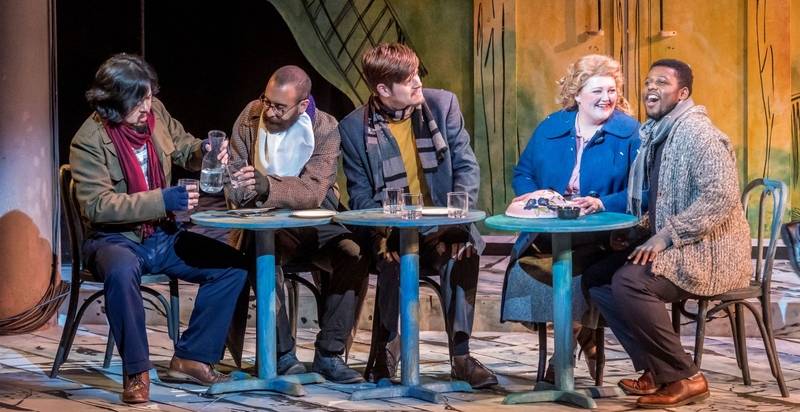Real talk: I have never been to or seen an opera. My only experience with opera is watching characters in movies going to the opera (i.e. Julia Roberts in Pretty Woman). Unless Phantom of the Opera counts — because that takes place in an opera house and there are some opera scenes — okay probably not. Therefore, if you are looking for a review from someone with a keen eye and ear for operatic productions, then this is not it. However if you don’t mind hearing from an opera-viewing neophyte like me, then read on.
More real talk: I’m not particularly drawn to an operatic style of singing. Now, I can for sure appreciate the immense talent, training, and discipline that such an endeavor requires, but it’s just not my general taste.
Now that we have those confessions behind us, on to Puccini’s La Bohéme performed by Lyric Theatre @ Illinois at Krannert Center’s Tryon Festival Theatre this weekend. This seemed like a good choice for my first opera because of my general familiarity of the story. Meaning, I’m well versed in Rent, which drew heavily on La Bohéme for its characters and storylines. I felt this story knowledge would help me through the singing in Italian. Thankfully, there were also subtitles projected on a screen above the stage so that the audience could engage not just with the voices and stage action, but with the sentiments of Puccini as well. I have to say that I both appreciated this and found it distracting at times. I enjoyed being able to know the exchanges happening between the characters, but my eyes were constantly trying to decide between focusing on the words and focusing on the stage visuals.
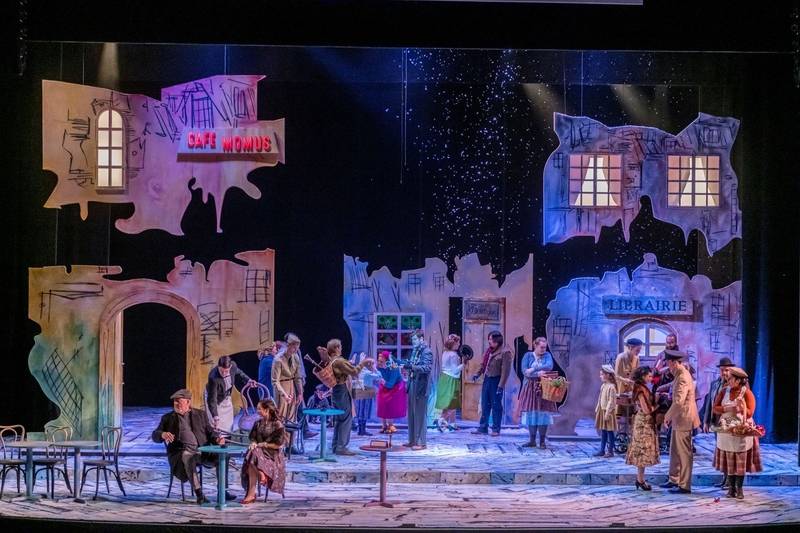
The original, and many traditional versions of La Bohéme, take place in Paris of the 1830s. Director Nathan Gunn and his production team set this performance in the 1950s, with the sets and costumes reflecting that era. The sets were simple but effective, with softly falling snow a constant backdrop. They did a nice job of using the set to match the moods of each act: the sparse yet cozy garret of Marcello and and Rodolfo where they examine their lives and gather with friends, the bright bustling quarter outside Café Momus where we see their contrasting love lives play out with a backdrop of children, street vendors, and soldiers mingling, and the cold dark streets at the edge of Paris where they experience love lost.
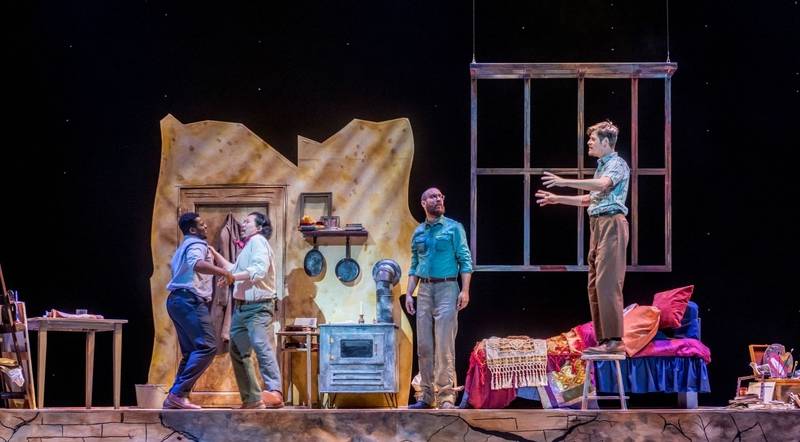
On the whole, La Bohéme is a story of relationships, and the performers did an excellent job of bringing them to life. There are of course the romantic relationships, most notably the one between Rodolfo (Andrew Turner) and Mimì (Kimberly Ouellette). But there’s also a thread of friendship woven through the narrative, providing touching but also comedic moments. Initially we are introduced to Rodolfo and his friend Marcello (Xiaoyi Zha). Zha and Turner played well off of each other, and were quite believable as a pair of best friends and roommates, trying to navigate life and love as starving artists. Throw in fellow bohemians Colline (Sergio Andrés Martínez Salazar) and Schaunard (Kevin Lucas), and you had a typical group of guys who have each other’s backs yet also like to bullshit with each other. In fact, two genuine laugh out loud moments came from the great chemistry between these four performers. As Marcello and his on again off again lover Musetta (Jessica Ragsdale) spar in the public quarter, Salazar and Lucas are hysterical as they continually comment on the “play” they are watching. The best laugh came in the final act, when Marcello and Rodolfo take a break from their romantic angst with the help of Colline and Schaunard. They launch into a dance routine and Zha and Turner are a hilariously lovely waltzing couple. The audience (including myself) especially loved Zha’s brief turn as a soprano.
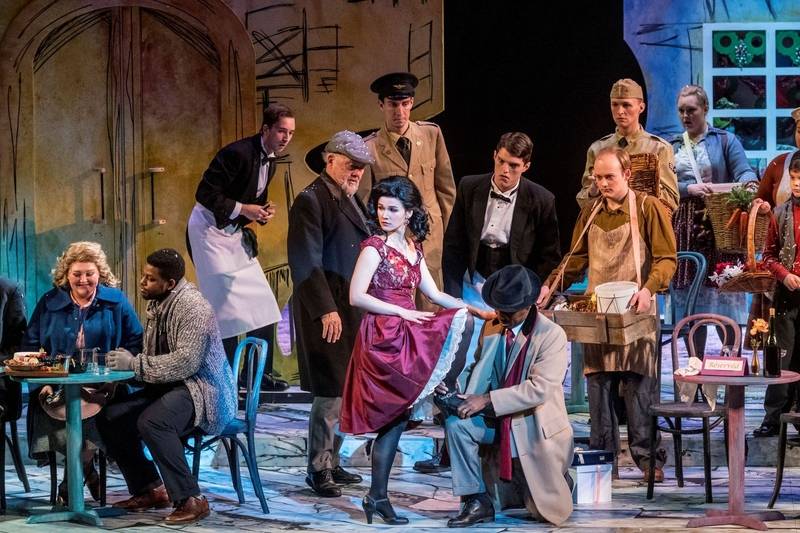
But of course, this opera is ultimately about love in all of its frustrating complexity. There are two primary relationships happening throughout the story: Rodolfo/Mimì and Marcello/Musetta. Turner and Ouellette sweetly portrayed the passionate yet ultimately tragic relationship between Rodolfo and Mimì. In many scenes their voices were in conversation, but as they re-profess their love as Mimì fades in the final scene, they blended beautifully and powerfully. Zha and Ragsdale were highly entertaining as they navigated their fiery love affair. Ragsdale was wonderful as the impulsive and seductive Musetta. She owned the stage during the iconic Musetta’s Waltz.
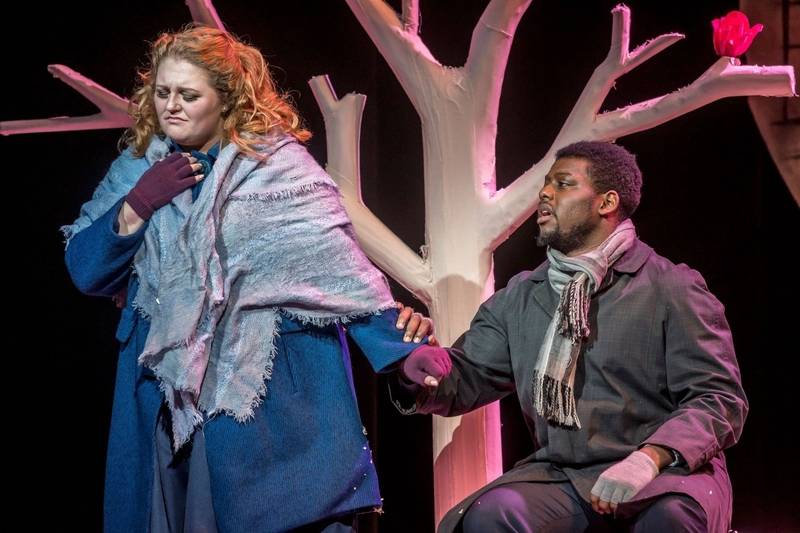
This newbie’s hot take: the performance was a delightful way to spend my Sunday afternoon. Despite my aforementioned lukewarm attraction to operatic voices, I was blown away by the talent that we have right here in Champaign-Urbana. The three leads (Zha, Ouelette, and Turner) had remarkably powerful voices, and the remaining cast certainly brought their “A” games as well. Will I ever be an opera person? Probably not, but I’m glad to have had the experience. It’s an art form that I could certainly develop an appreciation for, and it reminded me of how fortunate we are to have a university that nurtures excellence in the arts — world-renowned performer Gunn is an educator and director here, for one example — and has the means to amplify them through Krannert Center.
Photos provided by KCPA








